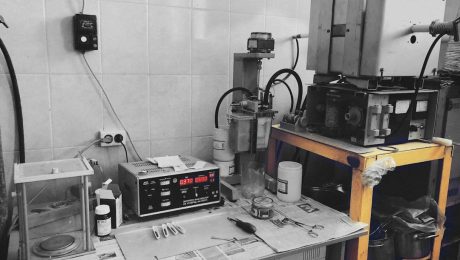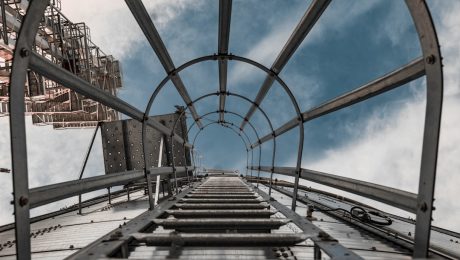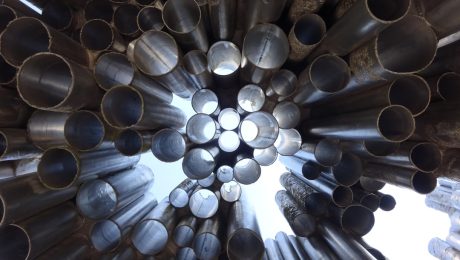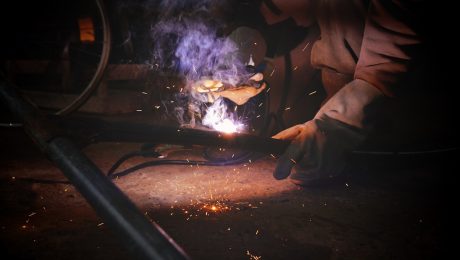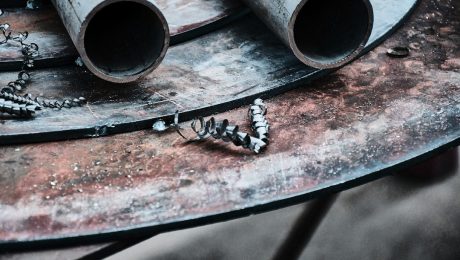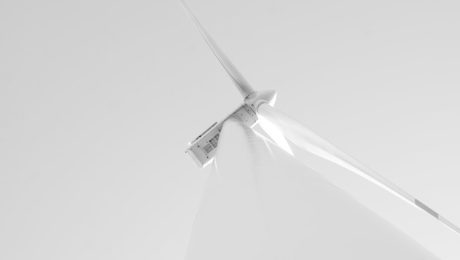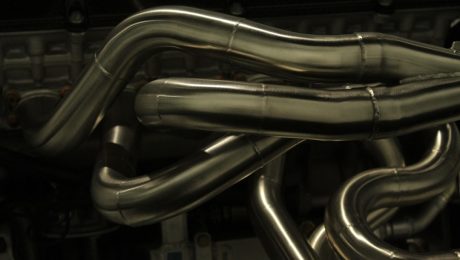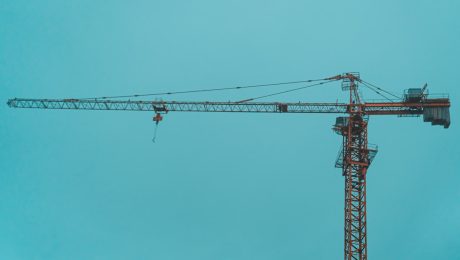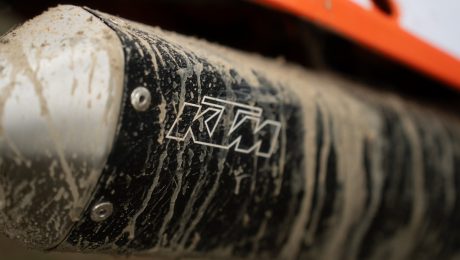body {
font-family: sans-serif;
line-height: 1.6;
}
h1, h2, h3 {
color: #333;
}
ISO 9001:2015 is more than just a set of standards; it’s a framework for building a robust Quality Management System (QMS) that drives continuous improvement and customer satisfaction. This guide delves into the practical application of ISO 9001, moving beyond the theoretical and exploring real-world examples to show how it truly works in action.
1. Defining the Scope and Context of Your QMS
Before embarking on ISO 9001 implementation, a crucial first step is defining the scope. This involves clearly identifying the products, services, and processes covered by your QMS. Consider your organization’s size, structure, and the specific activities you want to include. For example, a small manufacturing company might focus on the production process, while a large software firm might include development, testing, and customer support. Understanding your organizational context—the internal and external factors influencing your QMS—is equally vital. This includes analyzing your market, regulatory requirements, customer expectations, and internal resources.
Effective scope definition prevents scope creep and ensures your QMS remains focused and manageable. It’s important to document this scope clearly within your QMS documentation. This will serve as a reference point throughout the implementation and improvement phases.
2. Establishing Processes and Documenting Procedures
ISO 9001 emphasizes a process-based approach. You need to identify and map all key processes within your organization, from order placement to product delivery (or service provision). This involves documenting the steps, inputs, outputs, responsibilities, and performance indicators for each process. This documentation is crucial for ensuring consistency and traceability. Think of it as creating a detailed instruction manual for how your business operates.
For instance, a customer service process might involve steps like receiving a customer complaint, investigating the issue, proposing a solution, implementing the solution, and following up with the customer. Each step should be clearly defined, and the responsible personnel identified. Procedures should be regularly reviewed and updated to reflect changes in your organization or customer needs.
3. Implementing Risk-Based Thinking and Continuous Improvement
ISO 9001 places significant emphasis on risk-based thinking. This involves proactively identifying potential risks and opportunities that could affect your ability to meet customer requirements and achieve your quality objectives. This isn’t about avoiding risks entirely but about understanding them, assessing their likelihood and impact, and developing mitigation strategies. This proactive approach allows for preventative actions rather than reactive firefighting.
Continuous improvement is the heart of ISO 9001. The Plan-Do-Check-Act (PDCA) cycle is a key tool for driving improvements. This cyclical process involves planning changes, implementing them, checking their effectiveness, and acting on the results to further refine processes. Regular internal audits and management reviews help to identify areas for improvement and ensure the QMS remains effective and efficient.
4. Internal Audits and Management Review
Internal audits are crucial for verifying the effectiveness of your QMS. These audits assess compliance with the ISO 9001 standards and identify areas for improvement. Regular internal audits, conducted by trained personnel, ensure your system remains effective and compliant. These audits should be planned and documented, with findings documented and corrective actions implemented.
The management review is a high-level assessment of the QMS’s performance. This review involves senior management analyzing key performance indicators (KPIs), audit results, customer feedback, and other relevant data to identify areas for improvement and strategic decision-making. This review ensures that the QMS remains aligned with the organization’s overall strategic goals.
5. Achieving and Maintaining ISO 9001 Certification
While implementing a robust QMS is valuable in itself, seeking ISO 9001 certification provides external validation of your commitment to quality. Certification involves a rigorous audit by an accredited certification body to ensure compliance with the standard. This certification demonstrates to clients, stakeholders, and potential investors your dedication to quality and customer satisfaction.
Maintaining certification requires ongoing efforts. Regular internal audits, management reviews, and continual improvement initiatives are crucial. The certification body will conduct surveillance audits at regular intervals to ensure your QMS remains compliant. The benefits of certification extend beyond the certificate itself. It fosters trust, enhances credibility, and can open doors to new business opportunities.
Implementing an ISO 9001 quality system is a journey, not a destination. It requires commitment, dedication, and a focus on continuous improvement. By embracing the principles outlined above, your organization can build a robust QMS that drives efficiency, enhances customer satisfaction, and positions you for long-term success.
SEO Tags:
- ISO 9001
- Quality Management System
- ISO 9001 Implementation
- Quality Control
- Business Improvement
body {
font-family: sans-serif;
line-height: 1.6;
}
h1, h2, h3 {
color: #333;
}
code {
background-color: #f0f0f0;
padding: 2px 4px;
border-radius: 4px;
}
Steel, a ubiquitous material in modern construction, boasts exceptional strength and versatility. However, designing safe and efficient steel structures requires a thorough understanding of strength calculations. This comprehensive guide delves into the intricacies of these calculations, exploring various methods, factors, and considerations to ensure structural integrity.
1. Understanding Stress and Strain in Steel
Before diving into specific calculations, it’s crucial to grasp the fundamental concepts of stress and strain. Stress (σ) is the force (F) applied per unit area (A): σ = F/A. It’s measured in Pascals (Pa) or megapascals (MPa). Strain (ε) represents the deformation of a material under stress, expressed as the change in length (ΔL) divided by the original length (L): ε = ΔL/L. Strain is dimensionless.
Steel’s behavior under stress is generally elastic within its yield strength. Beyond this point, it enters the plastic region, exhibiting permanent deformation. Understanding this relationship is vital for ensuring the structure remains within its elastic limit and avoids catastrophic failure.
2. Material Properties and Allowable Stress
Accurate strength calculations depend heavily on the material properties of the steel used. Key properties include yield strength (fy), ultimate tensile strength (fu), and modulus of elasticity (E). These values are determined through standardized testing and are specified in material datasheets. The yield strength represents the stress at which the material begins to deform plastically. The ultimate tensile strength is the maximum stress the material can withstand before failure. The modulus of elasticity describes the material’s stiffness.
Allowable stress (fa) is a crucial design parameter. It’s a fraction of the yield strength, incorporating safety factors to account for uncertainties in material properties, loading conditions, and fabrication imperfections. The safety factor is determined by relevant building codes and standards (e.g., AISC, Eurocode).
3. Common Steel Member Design: Beams and Columns
Steel structures primarily utilize beams and columns. Beam design focuses on bending stress and shear stress. Bending stress (σb) is calculated using the bending moment (M), the section modulus (S), and the distance from the neutral axis: σb = M/S. Shear stress (τ) is calculated using the shear force (V) and the shear area (Av): τ = V/Av.
Column design considers compressive stress and buckling. Euler’s formula is used for slender columns to determine the critical buckling load. For shorter columns, more complex methods accounting for material yielding are employed. Interaction equations are often used to account for combined bending and axial loads.
4. Connection Design: Ensuring Structural Integrity
Connections are critical for transferring loads between different steel members. The strength of a connection must be equal to or greater than the strength of the connected members to avoid failure at the connection point. Common connection types include bolted connections, welded connections, and riveted connections. Each type has its own design considerations and strength calculation methods. Bolted connections require checking for shear, bearing, and tensile stresses in the bolts and connected plates. Welded connections need analysis of weld strength based on weld size and type.
Proper detailing of connections is paramount to ensure efficient load transfer and prevent premature failure. Factors such as bolt spacing, edge distance, and weld size significantly affect connection strength.
5. Advanced Considerations: Fatigue, Stability, and Seismic Design
Beyond basic strength calculations, advanced considerations are crucial for ensuring the long-term performance and safety of steel structures. Fatigue analysis accounts for the effects of repeated loading cycles, which can lead to crack initiation and propagation. Stability analysis addresses the potential for overall structural instability, such as buckling or lateral-torsional buckling of beams and columns. Seismic design ensures the structure can withstand earthquake forces, requiring consideration of dynamic loading and ductility.
Software tools such as finite element analysis (FEA) are often utilized for complex structural analysis, providing detailed stress and deformation information throughout the structure. These tools are particularly valuable for intricate geometries or unusual loading conditions.
Understanding strength calculations in steel structures is fundamental to safe and efficient design. While this guide provides an overview, consulting relevant building codes, standards, and experienced structural engineers is crucial for real-world applications. Proper design and analysis ensure the longevity and safety of steel structures, maximizing their strength and versatility.
SEO Tags:
- Steel structure calculations
- Steel strength design
- Structural steel design
- Steel beam calculations
- Steel column design
Threaded pipes are ubiquitous in various industries, from plumbing and construction to manufacturing and oil and gas. Their reliable connection method makes them a cornerstone of fluid transfer systems. This comprehensive guide explores the key features and advantages that make threaded pipes a preferred choice for countless applications.
Understanding the Mechanics of Threaded Pipe Connections
The fundamental advantage of threaded pipes lies in their simple yet robust connection mechanism. Threads, precisely cut grooves along the pipe’s exterior, engage with matching threads on fittings, creating a mechanically strong and relatively leak-proof seal. This differs from other joining methods like welding or solvent welding, which require specialized equipment and expertise. The simplicity of threading allows for easier assembly and disassembly, crucial for maintenance and repairs. Different thread types exist, such as NPT (National Pipe Taper) – which uses tapered threads for a tighter seal, and NPSM (National Pipe Straight Mechanical) – employing parallel threads for easier assembly and disassembly. The choice of thread type depends on the application’s pressure requirements and the need for reusability.
Material Selection: The Foundation of Threaded Pipe Durability
The material of a threaded pipe significantly influences its durability, lifespan, and suitability for specific applications. Common materials include:
- Steel: Offers high strength and durability, making it suitable for high-pressure applications. Galvanized steel provides added corrosion resistance.
- Copper: Known for its corrosion resistance and excellent thermal conductivity, copper pipes are often used in plumbing systems.
- Cast Iron: Provides high strength and durability, suitable for underground applications, though it is heavier and more susceptible to corrosion than steel.
- PVC (Polyvinyl Chloride): A lightweight and corrosion-resistant material often used in low-pressure applications. However, PVC threaded pipes are typically not suitable for high temperatures.
- CPVC (Chlorinated Polyvinyl Chloride): A more robust version of PVC, offering higher temperature resistance and making it suitable for hot water systems.
The selection of the appropriate material is crucial for ensuring the longevity and safety of the piping system. Factors like pressure, temperature, chemical compatibility, and environmental conditions all play a role in material selection.
Advantages of Threaded Pipes: A Comprehensive Overview
Threaded pipes offer numerous advantages compared to other piping systems:
- Ease of Installation and Repair: The relatively simple connection method allows for faster installation and easier repairs. Specialized tools are minimal compared to welding or soldering.
- Reusability: Threaded connections can be easily disassembled and reassembled, making them ideal for applications requiring frequent maintenance or modifications.
- Cost-Effectiveness: While the initial cost may vary depending on the material, the ease of installation and repair can lead to overall cost savings.
- Versatility: Threaded pipes are available in a wide range of materials, sizes, and thread types, catering to diverse applications.
- Strength and Durability: When properly installed, threaded connections provide a strong and reliable seal, capable of withstanding significant pressure and temperature variations (depending on the material).
- Leak Prevention (with proper sealing): The tapered threads of NPT fittings create a self-sealing effect, minimizing the risk of leaks when properly sealed with thread sealant.
Applications of Threaded Pipes: Across Diverse Industries
The versatility of threaded pipes makes them suitable for a wide array of applications across various industries:
- Plumbing Systems: Threaded pipes are widely used in residential, commercial, and industrial plumbing systems for conveying water, gas, and other fluids.
- Industrial Processes: They find application in chemical processing, manufacturing, and oil and gas industries for transporting various fluids and gases.
- HVAC Systems: Threaded pipes are used in heating, ventilation, and air conditioning systems to transport refrigerants and other fluids.
- Fire Protection Systems: In fire sprinkler systems, threaded pipes ensure a reliable connection for quick and efficient water delivery.
- Compressed Air Systems: They are used to distribute compressed air in industrial settings.
Ensuring Proper Installation and Maintenance of Threaded Pipes
While threaded pipes are relatively easy to install, proper techniques are crucial to ensure a leak-free and durable connection. Using appropriate thread sealant (like PTFE tape or pipe dope) is essential to prevent leaks. Over-tightening can damage the threads, leading to leaks or pipe failure. Regular inspection and maintenance are crucial for identifying and addressing potential problems before they escalate. Properly maintained threaded pipe systems can provide years of reliable service.
In conclusion, threaded pipes offer a compelling combination of simplicity, strength, and versatility, making them a cornerstone of numerous industries. Understanding their features and advantages allows for informed selection and proper installation, ensuring the long-term reliability and safety of any piping system.
Tags: threaded pipes, pipe fittings, NPT, NPSM, pipe installation, plumbing, industrial piping
The steel industry, a cornerstone of global infrastructure and manufacturing, is undergoing a transformative period driven by relentless research and development (R&D). From enhancing material properties to revolutionizing manufacturing processes, innovation in steel is shaping a more sustainable, efficient, and high-performance future. This post delves into the key areas of R&D pushing the boundaries of steel product innovation.
1. Advanced Steel Alloys: Tailoring Properties for Specific Applications
The quest for superior steel lies in the development of advanced alloys. Researchers are constantly experimenting with different compositions, adding elements like vanadium, niobium, and titanium to enhance specific properties. For instance, high-strength low-alloy (HSLA) steels offer exceptional strength-to-weight ratios, making them ideal for automotive applications where weight reduction is crucial for fuel efficiency. Similarly, stainless steels with enhanced corrosion resistance are vital in demanding environments like offshore structures and chemical processing plants. The focus is not just on increasing strength but also on improving ductility, weldability, and fatigue resistance – all critical factors determining the lifespan and performance of steel products.
Furthermore, research into advanced high-strength steels (AHSS) is leading to the development of materials with unprecedented strength and formability. These steels are crucial in lightweighting vehicles and other applications requiring high strength and complex shapes. The development of tailored microstructures through advanced processing techniques plays a significant role in achieving these enhanced properties. This includes techniques like thermomechanical processing and controlled rolling, which modify the grain structure of the steel to optimize its mechanical behavior.
2. Sustainable Steel Production: Minimizing Environmental Impact
The steel industry’s environmental footprint is a major concern. R&D is actively addressing this by focusing on sustainable steel production. This involves reducing carbon emissions associated with iron ore reduction, a process traditionally energy-intensive and reliant on fossil fuels. Significant progress is being made in exploring alternative methods like hydrogen-based direct reduction, which uses hydrogen instead of coke to reduce iron ore, resulting in significantly lower CO2 emissions. Researchers are also investigating the use of renewable energy sources to power steel mills, further reducing their carbon footprint.
Beyond carbon reduction, sustainable steel production encompasses the entire lifecycle of the material, from raw material sourcing to end-of-life recycling. The development of more efficient recycling processes is crucial, as it helps to conserve resources and reduce waste. Research is also focusing on developing steel alloys with higher recyclability, minimizing the energy and resources required for processing scrap steel.
3. Advanced Manufacturing Processes: Enhancing Efficiency and Precision
Innovation in steel manufacturing processes is crucial for improving efficiency, reducing costs, and enhancing product quality. Additive manufacturing, or 3D printing, is revolutionizing the way steel components are produced. This technology allows for the creation of complex geometries that are impossible to achieve with traditional methods, enabling the production of lighter and stronger parts. While still in its early stages for steel, advancements in laser powder bed fusion and other techniques are rapidly expanding the possibilities of 3D-printed steel components.
Beyond additive manufacturing, other advanced processes like high-speed forming and cold rolling are being optimized to enhance productivity and precision. These techniques allow for the creation of components with tighter tolerances and improved surface finishes. The integration of automation and robotics in steel manufacturing is also driving efficiency gains and improving worker safety.
4. Novel Steel Applications: Expanding the Horizons of the Material
The versatility of steel is constantly being explored through R&D. New applications are emerging in diverse sectors, driven by the development of advanced steel alloys and manufacturing processes. For example, high-strength steels are finding increasing use in wind turbine towers, contributing to the growth of renewable energy infrastructure. In the construction industry, advanced steel alloys are enabling the design of taller and more resilient buildings.
Furthermore, research is exploring the use of steel in biomedical applications, such as implants and surgical instruments. The development of biocompatible steel alloys with enhanced corrosion resistance and mechanical properties is crucial for this emerging field. The potential for steel in advanced energy storage systems, such as batteries, is also being investigated, leveraging its conductive properties and potential for improved performance and safety.
5. Smart Steel and Digitalization: Enhancing Performance Through Data and Sensors
The integration of sensors and data analytics is transforming the way steel is designed, manufactured, and used. Smart steel incorporates sensors that monitor the structural health of steel components, providing real-time data on stress, strain, and temperature. This information can be used for predictive maintenance, preventing failures and extending the lifespan of structures. The use of digital twins, virtual representations of physical steel components, allows for simulations and optimizations, leading to improved design and performance.
Data analytics plays a crucial role in optimizing steel production processes. By analyzing data from various sensors and manufacturing equipment, engineers can identify inefficiencies and optimize parameters to improve quality and reduce costs. The integration of artificial intelligence (AI) and machine learning (ML) is further enhancing the capabilities of data analytics, enabling predictive modeling and automation of complex processes.
In conclusion, the future of steel is bright, fueled by ongoing R&D efforts. From advanced alloys to sustainable production methods and innovative applications, the steel industry is constantly evolving, shaping a world of stronger, more sustainable, and more efficient structures and products.
SEO Tags:
- Steel Innovation
- R&D Steel
- Advanced Steel Alloys
- Sustainable Steel Production
- Steel Manufacturing
The steel industry, a cornerstone of global manufacturing, is undergoing a significant transformation. Traditional methods of sourcing and supplying steel are increasingly inefficient, prone to delays, and lack transparency. Enter steel B2B matching platforms – innovative digital solutions designed to streamline the entire process, connecting buyers and sellers in a dynamic and efficient marketplace.
1. How Steel B2B Matching Platforms Work: Connecting Buyers and Sellers
These platforms operate as digital intermediaries, creating a centralized space where steel buyers and sellers can connect, interact, and transact. The process typically involves creating profiles detailing specific needs (for buyers) and available inventory (for sellers). Advanced search filters allow for precise matching based on various criteria, including steel grade, quantity, dimensions, location, and delivery timeframe. Many platforms incorporate real-time inventory updates, ensuring accuracy and minimizing delays. Beyond simple matching, some platforms integrate functionalities like secure messaging, order management systems, and even payment processing, creating a comprehensive ecosystem for steel transactions.
2. Key Features of Effective Steel B2B Matching Platforms
The effectiveness of a steel B2B matching platform hinges on its features. Essential features include: a robust search engine with advanced filtering capabilities; secure communication channels; detailed product information, including certifications and quality control data; transparent pricing mechanisms; real-time inventory tracking; order management tools; secure payment gateways; and comprehensive reporting and analytics. Furthermore, user-friendly interfaces are crucial for ease of navigation and adoption. Some advanced platforms may integrate with ERP systems, further enhancing operational efficiency.
3. Benefits for Steel Buyers and Sellers: A Win-Win Scenario
Steel B2B matching platforms offer significant advantages for both buyers and sellers. For buyers, these platforms provide access to a wider range of suppliers, enabling price comparisons and potentially securing better deals. They also streamline the sourcing process, reducing time and administrative overhead. Improved transparency ensures better quality control and reduces the risk of supply chain disruptions. For sellers, the platforms offer increased market reach, expanding their customer base and potentially increasing sales volume. They can also optimize inventory management by matching supply with demand more effectively, minimizing storage costs and reducing waste. The ability to reach new markets globally further enhances their competitiveness.
4. Addressing Challenges in the Steel Industry: Transparency and Efficiency
The steel industry traditionally faces challenges related to information asymmetry, lack of transparency, and inefficient communication. Steel B2B matching platforms directly address these issues. The centralized platform ensures transparency in pricing and product information, reducing the potential for price manipulation and ensuring fair competition. The streamlined communication channels improve efficiency, reducing delays and improving overall supply chain responsiveness. The integration of various functionalities, such as real-time inventory tracking and order management, further minimizes errors and maximizes efficiency.
5. Choosing the Right Steel B2B Matching Platform: Factors to Consider
Selecting the appropriate platform requires careful consideration of several factors. The size and scope of your business will influence your needs. A small business may require a simpler platform with basic features, while a large enterprise may need a more comprehensive solution with advanced functionalities and integrations. Consider the platform’s user interface, its search capabilities, the range of suppliers and buyers it connects, the security measures in place, and its customer support. Reviews and testimonials from other users can provide valuable insights. Finally, ensure the platform aligns with your specific requirements and budget.
The adoption of steel B2B matching platforms represents a significant step towards a more efficient, transparent, and profitable steel industry. By leveraging technology, these platforms are revolutionizing the way steel is sourced and supplied, benefiting both buyers and sellers alike. As the industry continues to evolve, these platforms are poised to play an increasingly vital role in shaping the future of steel commerce.
SEO Tags:
Steel B2B, Steel Marketplace, Steel Sourcing Platform, Steel Supply Chain, B2B Steel Trading
Oil refineries are complex and hazardous environments, demanding materials that can withstand extreme pressures, temperatures, and corrosive chemicals. Steel pipes form the very backbone of these operations, transporting vital fluids and gases throughout the intricate network of processes. Understanding the selection, application, and maintenance of these pipes is crucial for ensuring efficient and safe refinery operations.
1. Diverse Applications of Steel Pipes in Oil Refineries
Steel pipes in oil refineries serve a multitude of purposes, each demanding specific properties. They are used extensively in:
- Crude oil transportation: Large-diameter pipes transport crude oil from storage tanks to processing units, often under high pressure.
- Product pipelines: Refined products like gasoline, diesel, and jet fuel are transported via pipelines to storage tanks and loading facilities.
- Process piping: A vast network of smaller-diameter pipes carries various process streams, including intermediate products, catalysts, and solvents, between different units within the refinery.
- Steam and water distribution: Steel pipes are essential for distributing steam for heating and power generation, and for circulating cooling water throughout the refinery.
- Instrument and control lines: Smaller pipes carry instrument air, sample streams, and other essential fluids for monitoring and controlling refinery operations.
- Emergency shutdown systems: High-pressure pipelines are crucial components of emergency shutdown systems, enabling rapid isolation of process units in case of emergencies.
2. Material Selection: Choosing the Right Steel for the Job
The selection of steel pipe depends heavily on the specific application and the nature of the fluids being transported. Factors to consider include:
- Pressure rating: Pipes must withstand the operating pressures of the process streams. Higher pressures necessitate thicker pipe walls and stronger steel grades.
- Temperature rating: Some process streams operate at extremely high temperatures, requiring steel with high creep resistance and thermal stability.
- Corrosion resistance: Many refinery streams are corrosive, demanding the use of corrosion-resistant steel grades, such as stainless steel or carbon steel with specialized coatings.
- Weldability: The chosen steel grade must be readily weldable to ensure seamless pipe connections. Welding procedures must also be carefully controlled to maintain the integrity of the welds.
- Ductility and toughness: These properties are vital to ensure the pipe’s ability to withstand shock loading and prevent brittle failure.
Common steel grades used include carbon steel, low-alloy steel, stainless steel (various grades), and duplex stainless steel, each offering a unique balance of properties.
3. Safety and Regulatory Compliance in Steel Pipe Installation
Safety is paramount in oil refinery operations. Stringent safety protocols govern the installation, inspection, and maintenance of steel pipes. These protocols often include:
- Non-destructive testing (NDT): Techniques like radiographic testing, ultrasonic testing, and magnetic particle testing are used to detect flaws in the pipes and welds before they are put into service.
- Hydrostatic testing: Pipes are subjected to high-pressure water tests to verify their integrity and pressure-bearing capacity.
- Proper welding procedures: Qualified welders must adhere to strict welding codes and procedures to ensure the quality and safety of pipe joints.
- Regular inspections and maintenance: Regular inspections are essential to identify and address potential problems before they lead to leaks or failures. This includes visual inspections, leak detection, and corrosion monitoring.
- Compliance with industry standards and regulations: Refineries must adhere to stringent safety regulations and industry standards, such as those set by ASME (American Society of Mechanical Engineers) and API (American Petroleum Institute).
4. Maintenance and Repair of Steel Pipes in Refineries
Preventing pipe failures is crucial for maintaining refinery operations and ensuring safety. A proactive maintenance program is essential, encompassing:
- Regular inspections: Visual inspections, leak detection, and corrosion monitoring are vital for early detection of problems.
- Corrosion protection: Coatings, linings, and cathodic protection are employed to mitigate corrosion and extend the lifespan of the pipes.
- Repair and replacement: Damaged sections of pipes may need repair or replacement. This often involves specialized techniques to ensure the integrity of the repaired section.
- Predictive maintenance: Advanced techniques like vibration monitoring and acoustic emission analysis can help predict potential failures and schedule maintenance proactively.
- Proper documentation: Meticulous record-keeping of inspections, repairs, and maintenance activities is crucial for tracking the condition of the pipes and ensuring compliance with regulations.
5. Future Trends in Steel Pipe Technology for Refineries
The industry is constantly evolving, with advancements in steel pipe technology aimed at improving efficiency, safety, and sustainability. These trends include:
- Advanced materials: Development of new steel grades with enhanced corrosion resistance, strength, and higher temperature capabilities.
- Improved welding techniques: Innovations in welding technologies, such as automated welding and advanced welding processes, enhance weld quality and reduce defects.
- Smart pipelines: Integration of sensors and monitoring systems to enable real-time monitoring of pipe conditions and early detection of anomalies.
- Digital twin technology: Creating digital models of pipeline systems to simulate operations, predict failures, and optimize maintenance strategies.
<liSustainable practices: Emphasis on using recycled steel and developing more environmentally friendly coatings and corrosion protection methods.
In conclusion, steel pipes are indispensable components of oil refineries, playing a vital role in the safe and efficient operation of these complex facilities. Understanding their applications, material selection, installation, maintenance, and future trends is crucial for ensuring the continued reliability and safety of the refining industry.
Tags:
Steel Pipes Oil Refinery Pipeline Safety Industrial Piping Corrosion Resistance
body {
font-family: sans-serif;
line-height: 1.6;
}
h1, h2, h3 {
color: #333;
}
img {
max-width: 100%;
height: auto;
}
Wind turbines, the silent sentinels of renewable energy, rely on a complex interplay of engineering marvels to harness the power of the wind. While the blades themselves capture the attention, the robust and often overlooked support systems are crucial for efficient and safe operation. These systems, subjected to immense stress and fatigue, play a pivotal role in the longevity and performance of these colossal structures. This post delves into the intricacies of wind turbine blade support systems, exploring their design, materials, maintenance, and future innovations.
1. The Foundation of Power: Pitch Bearing Systems
The pitch bearing system is arguably the most critical component in blade support. It allows for the controlled adjustment of the blade’s angle (pitch) relative to the wind. This adjustment is essential for optimizing energy capture and protecting the turbine during high winds. The system typically consists of a complex arrangement of bearings, actuators, and hydraulic or electric systems. Different designs exist, including:
- Hydraulic Pitch Systems: These utilize hydraulic actuators to adjust the blade pitch. They offer high torque and precise control, but require regular maintenance and can be susceptible to leaks.
- Electric Pitch Systems: These employ electric motors and gearboxes for pitch control. They are increasingly popular due to their higher efficiency, reduced maintenance needs, and improved control accuracy.
The bearings themselves are typically designed to withstand extreme loads, vibrations, and environmental factors. High-quality materials like ceramics and advanced polymers are frequently used to ensure durability and minimize friction.
2. The Backbone of Stability: Blade Root Connections
The connection between the blade and the rotor hub is another crucial aspect of the support system. This connection must be incredibly strong and rigid to withstand the immense forces generated during operation. The design varies depending on the turbine size and type, but generally involves a complex assembly of bolts, flanges, and potentially shear webs. Materials used are typically high-strength steel alloys or composite materials designed for fatigue resistance and high tensile strength.
Careful consideration is given to stress concentration points to minimize the risk of fatigue failure. Advanced techniques like finite element analysis (FEA) are employed during the design phase to simulate real-world operating conditions and ensure structural integrity.
3. Weathering the Storm: Protection Against Environmental Factors
Wind turbines operate in harsh environments, exposed to extreme temperatures, wind speeds, and precipitation. The blade support systems must be designed to withstand these conditions. Corrosion protection is paramount, typically achieved through the use of specialized coatings, galvanization, or stainless steel components. Regular inspections and maintenance are crucial to identify and address any signs of corrosion or degradation.
Furthermore, effective sealing and drainage systems are incorporated to prevent water ingress into critical components, reducing the risk of corrosion and malfunction. The design also considers the impact of icing, especially in colder climates, with measures taken to minimize ice accumulation and prevent structural damage.
4. Monitoring and Maintenance: Ensuring Operational Efficiency
Regular monitoring and maintenance are vital for ensuring the long-term reliability and safety of wind turbine blade support systems. Modern turbines are often equipped with sophisticated monitoring systems that track key parameters such as bearing temperature, vibration levels, and blade pitch angles. This data allows for early detection of potential problems, enabling proactive maintenance and preventing costly downtime.
Maintenance activities range from routine inspections and lubrication to more complex repairs and component replacements. Advanced predictive maintenance techniques, utilizing machine learning and data analytics, are increasingly employed to optimize maintenance schedules and minimize operational disruptions.
5. The Future of Support: Innovation and Advanced Materials
Ongoing research and development efforts are focused on improving the efficiency, reliability, and sustainability of wind turbine blade support systems. This includes the exploration of new materials with enhanced strength-to-weight ratios, improved fatigue resistance, and enhanced corrosion protection. Advanced composite materials, such as carbon fiber reinforced polymers (CFRP), offer significant potential for reducing weight and improving performance.
Furthermore, advancements in sensor technology and data analytics are leading to more intelligent and proactive maintenance strategies. The integration of self-healing materials and autonomous monitoring systems promises to further enhance the reliability and longevity of wind turbine blade support systems, contributing to the continued growth of renewable energy.
In conclusion, the seemingly simple act of supporting a wind turbine blade is a complex engineering challenge requiring sophisticated design, high-quality materials, and rigorous maintenance. Understanding these systems is critical for maximizing the efficiency, lifespan, and safety of wind energy generation.
Tags: Wind Turbine Blades, Blade Support Systems, Pitch Bearing, Wind Turbine Maintenance, Renewable Energy Technology
body {
font-family: sans-serif;
line-height: 1.6;
}
h1, h2, h3 {
color: #333;
}
h1 {
font-size: 2.5em;
}
h2 {
font-size: 2em;
}
h3 {
font-size: 1.5em;
}
In the world of pipeline infrastructure, durability and longevity are paramount. Corrosion, a significant threat to the integrity and lifespan of pipelines, demands effective preventative measures. Polyethylene (PE) coated line pipes offer a robust solution, providing superior protection and numerous benefits over traditional uncoated pipes. This comprehensive guide delves into the advantages of PE-coated line pipes, exploring their impact on various aspects of pipeline construction and maintenance.
Unmatched Corrosion Resistance: The Core Benefit of PE Coating
The primary advantage of PE-coated line pipes lies in their exceptional corrosion resistance. Polyethylene, a thermoplastic polymer, acts as a formidable barrier against environmental factors that cause corrosion, such as moisture, oxygen, and soil electrolytes. Unlike bare steel pipes that are susceptible to rust and degradation, PE-coated pipes maintain their structural integrity for extended periods, even in harsh and corrosive environments like saltwater, acidic soils, and highly aggressive chemical exposures. This significantly reduces the risk of leaks, failures, and costly repairs, leading to substantial long-term savings.
Enhanced Durability and Extended Lifespan: Investing in Longevity
The protective PE coating not only prevents corrosion but also enhances the overall durability of the line pipe. It acts as a physical shield against mechanical damage, abrasion, and impact from external forces during transportation, installation, and operation. This increased resistance to wear and tear translates into a significantly extended lifespan compared to uncoated pipes. The reduced need for frequent replacements or repairs contributes to significant cost savings over the pipeline’s operational lifetime, making PE-coated pipes a financially sound investment.
Cost-Effectiveness: Balancing Initial Investment with Long-Term Savings
While the initial cost of PE-coated line pipes might be slightly higher than uncoated pipes, the long-term cost benefits are undeniable. The reduced maintenance, repair, and replacement costs far outweigh the initial investment. The extended lifespan, minimizing downtime and interruptions, contributes significantly to operational efficiency and overall cost savings. Furthermore, the reduced risk of environmental damage from leaks and corrosion minimizes potential liabilities and remediation costs.
Simplified Installation and Reduced Labor Costs: Streamlining the Process
The smooth surface of PE-coated pipes facilitates easier handling and installation. The reduced friction during installation minimizes the risk of damage and speeds up the process, leading to reduced labor costs and project completion time. This streamlined installation process is particularly beneficial in challenging terrains or remote locations where access and maneuverability can be limited.
Environmental Friendliness: Minimizing Environmental Impact
The extended lifespan of PE-coated line pipes contributes to environmental sustainability by reducing the need for frequent replacements. This minimizes the environmental impact associated with manufacturing, transportation, and disposal of traditional steel pipes. Moreover, the superior corrosion resistance prevents leaks and spills of transported materials, protecting the surrounding environment from contamination. The use of PE-coated pipes aligns with environmentally conscious practices and contributes to a reduced carbon footprint.
In conclusion, the benefits of PE-coated line pipes are multifaceted and significant. From enhanced corrosion resistance and extended lifespan to cost-effectiveness and environmental friendliness, these pipes offer a superior solution for various pipeline applications. Their superior performance and long-term advantages make them a compelling choice for those seeking reliable, durable, and sustainable pipeline infrastructure.
SEO-Friendly Tags:
- PE coated line pipes
- pipeline corrosion protection
- line pipe coating
- corrosion resistant pipes
- durable pipeline solutions
body { font-family: sans-serif; line-height: 1.6; }
h1, h2, h3 { color: #333; }
img { max-width: 100%; height: auto; }
The construction industry is undergoing a significant transformation, driven by the need for sustainable, efficient, and cost-effective building solutions. Hybrid construction, a clever blend of traditional and modern building methods, is emerging as a leading approach, offering a unique combination of advantages. This post explores the diverse facets of hybrid construction, delving into its various techniques, benefits, challenges, and future prospects.
1. Understanding the Core Principles of Hybrid Construction
Hybrid construction isn’t simply about using different materials together; it’s a strategic approach to leveraging the strengths of various methods to achieve optimal results. It involves combining elements of traditional techniques, such as timber framing or masonry, with modern methods like steel structures, prefabricated components, or 3D-printed elements. The key is synergy – selecting materials and methods that complement each other, minimizing weaknesses and maximizing performance. For example, a project might use a steel frame for structural integrity, combined with timber cladding for aesthetic appeal and insulation, and prefabricated modular units for faster construction.
2. Exploring Different Hybrid Construction Methods
The versatility of hybrid construction allows for a wide range of combinations. Some common examples include:
- Timber-Steel Hybrids: Utilizing the renewable and sustainable nature of timber for walls and floors, while employing steel for structural support, particularly in taller buildings or areas requiring high load-bearing capacity.
- Concrete-Steel Hybrids: Combining the strength and durability of concrete with the flexibility and precision of steel. This is often seen in high-rise buildings where concrete forms the core structure, and steel is used for beams, columns, and bracing.
- Masonry-Steel Hybrids: Integrating traditional masonry walls with steel framing for improved seismic resistance and structural integrity. This approach offers a balance between aesthetic appeal and modern engineering principles.
- Prefabricated-In-Situ Hybrids: Combining prefabricated modules (walls, floors, or entire sections) with on-site construction. This approach accelerates construction timelines while allowing for customization and site-specific adjustments.
- 3D-Printed Concrete-Steel Hybrids: Employing 3D printing technology to create complex concrete forms, which are then reinforced with steel for structural strength. This method enables intricate designs and reduces construction waste.
3. The Advantages of Embracing Hybrid Construction Techniques
Hybrid construction offers a compelling array of benefits:
- Enhanced Sustainability: The ability to incorporate sustainable materials like timber reduces the environmental impact compared to relying solely on concrete or steel.
- Increased Efficiency: Combining prefabrication with on-site construction streamlines the building process, leading to faster project completion and reduced labor costs.
- Improved Structural Performance: Hybrid structures often exhibit superior strength, durability, and resistance to natural disasters compared to traditional methods.
- Cost-Effectiveness: While initial investment might be similar, the efficiency gains and reduced waste often lead to overall cost savings in the long run.
- Design Flexibility: The blend of materials and techniques allows for greater design freedom and the creation of innovative and aesthetically pleasing structures.
4. Addressing the Challenges of Hybrid Construction
Despite its advantages, hybrid construction faces certain challenges:
- Design Complexity: Integrating different materials and construction methods requires careful planning and expertise to ensure compatibility and structural integrity.
- Material Compatibility: Selecting materials that work well together is crucial to avoid issues like differential expansion or corrosion.
- Skill and Training: Construction crews need to be proficient in various techniques, requiring specialized training and potentially higher labor costs initially.
- Regulatory Compliance: Meeting building codes and regulations can be more complex with hybrid approaches, requiring thorough documentation and approvals.
- Cost Uncertainty: Accurate cost estimation can be challenging due to the involvement of multiple materials and techniques.
5. The Future of Hybrid Construction: Trends and Innovations
The future of hybrid construction is bright, with ongoing innovations driving further advancements. We can expect to see:
- Greater Integration of Advanced Materials: The use of high-performance concrete, self-healing materials, and bio-based composites will enhance sustainability and performance.
- Increased Adoption of Digital Technologies: Building Information Modeling (BIM), 3D printing, and robotics will optimize design, fabrication, and construction processes.
- Focus on Circular Economy Principles: Hybrid construction will increasingly incorporate recycled and reclaimed materials, promoting a circular economy within the industry.
- Development of Standardized Hybrid Systems: Standardization of components and techniques will streamline the construction process and reduce costs.
- Enhanced Collaboration and Knowledge Sharing: Collaboration between architects, engineers, contractors, and material suppliers will be crucial to drive innovation and overcome challenges.
In conclusion, hybrid construction is not just a trend; it’s a paradigm shift in the building industry. By intelligently blending traditional and modern techniques, we can create sustainable, efficient, and resilient structures that meet the demands of a rapidly evolving world.
Tags: Hybrid Construction, Sustainable Building, Modern Construction, Prefabricated Construction, Green Building
EN 10217 is a crucial European standard defining the technical delivery conditions for seamless steel pipes. Understanding this standard is paramount for anyone working with steel pipes in various industries, from energy and construction to chemical processing and mechanical engineering. This comprehensive guide will delve into the intricacies of EN 10217, providing a clear overview of its various aspects.
Understanding EN 10217 Grades and Their Applications
EN 10217 categorizes seamless steel pipes into several grades, each designed for specific applications based on their mechanical properties and chemical composition. These grades are differentiated by letters and numbers, indicating their strength, ductility, and weldability. For instance:
- Grade 1: Typically used for general-purpose applications where high strength isn’t critical.
- Grade 2: Offers improved strength compared to Grade 1, suitable for applications requiring higher pressure resistance.
- Grade 3: Provides enhanced strength and toughness, often used in demanding environments and high-pressure systems.
- High-pressure Grades (e.g., Grade 5): Designed for extremely high-pressure applications, such as oil and gas pipelines.
- Low-temperature Grades: Possessing excellent impact resistance at sub-zero temperatures, ideal for cryogenic applications.
The specific application dictates the appropriate grade selection. Careful consideration of factors like operating pressure, temperature, and corrosive environment is crucial for ensuring the longevity and safety of the piping system.
Manufacturing Processes of EN 10217 Seamless Steel Pipes
EN 10217 seamless pipes are produced through a sophisticated process that ensures high quality and dimensional accuracy. The most common manufacturing method involves piercing a heated steel billet using a mandrel, followed by rolling and reducing the diameter to the desired size. This process creates a continuous, seamless tube without welds, offering superior strength and pressure resistance compared to welded pipes.
Further processing steps include heat treatment to achieve the required mechanical properties and surface finishing to enhance corrosion resistance. Quality control measures are implemented at each stage of the manufacturing process to ensure compliance with the EN 10217 standard.
Key Technical Specifications and Dimensions
EN 10217 provides detailed specifications regarding the dimensions, tolerances, and testing procedures for seamless steel pipes. These specifications cover aspects like:
- Outer diameter (OD): Ranges from small-diameter pipes to large-diameter pipes, depending on the application.
- Wall thickness (WT): Determines the pipe’s pressure rating and structural integrity.
- Length: Pipes can be supplied in various lengths, including random lengths, single random lengths, and fixed lengths.
- Tolerances: Specifies the allowable variations in OD and WT to ensure dimensional accuracy.
- Surface finish: Defines the acceptable surface quality, which can range from black (as-rolled) to pickled and oiled.
Understanding these specifications is essential for selecting the appropriate pipe for a specific project and ensuring proper installation.
Testing and Quality Control Procedures
Rigorous testing and quality control procedures are integral to ensuring the quality and reliability of EN 10217 seamless steel pipes. These procedures typically include:
- Chemical composition analysis: Verifies that the steel meets the specified chemical composition requirements for the chosen grade.
- Mechanical testing: Evaluates the tensile strength, yield strength, elongation, and impact resistance of the pipe material.
- Non-destructive testing (NDT): Techniques like ultrasonic testing (UT) and radiographic testing (RT) are employed to detect internal flaws or defects.
- Hydrostatic testing: The pipes are subjected to high internal pressure to verify their pressure resistance and integrity.
- Dimensional inspection: Ensures that the pipes meet the specified dimensional tolerances.
These rigorous tests guarantee that the pipes meet the stringent requirements of the EN 10217 standard and are suitable for their intended applications.
Distinguishing EN 10217 from Other Pipe Standards
While EN 10217 is a widely recognized standard for seamless steel pipes, it’s important to differentiate it from other standards, such as ASTM (American Society for Testing and Materials) standards. Although there might be overlaps in terms of material properties, the specific requirements and testing procedures can differ. Choosing the right standard depends on the geographical location, project specifications, and regulatory requirements.
Understanding the nuances between different standards is crucial for ensuring compliance and selecting the appropriate material for a given project. Consult relevant industry guidelines and regulations to make informed decisions.
This comprehensive overview of EN 10217 provides a solid foundation for understanding seamless steel pipes and their applications. Remember to always consult the full EN 10217 standard for detailed specifications and requirements relevant to your specific project.
Tags: EN 10217, seamless steel pipes, steel pipe standards, pressure pipe, pipe specifications, mechanical properties

